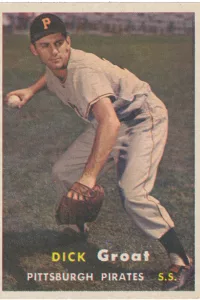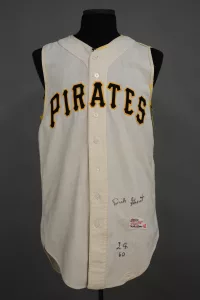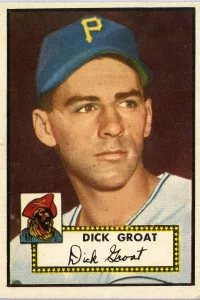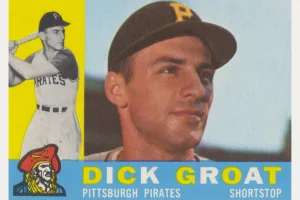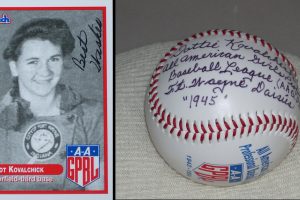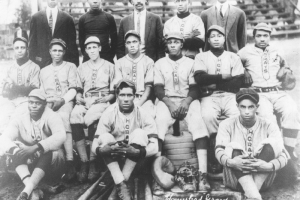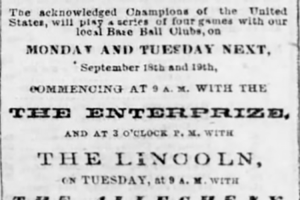In this age of increasing specialization, it is still possible to find multi-sport athletes competing at a high level in high school, though it becomes less common in college, especially in Division 1-A where training is a focused, year-around endeavor. It is rarer still in the big leagues. Certain names leap immediately to mind – Bo Jackson, Deion Sanders, even Babe Didrikson. But there are also athletes with a connection to this region that have earned the moniker, “players for all seasons.”
In the late 19th century, athletes known best for their achievements on the baseball diamond also played football in the off-season. Christy Mathewson, the great baseball pitcher and member of the first Hall of Fame class, played for the Pittsburgh Stars in 1902, a team that was part of the first, three-team NFL. Ed Abbaticchio, recognized as the first Italian American to play professional baseball (for the Pittsburgh Pirates) also played “professional” football in the 1890s. Both these men sought the opportunity to earn some extra money and to play some of the best non-college competitive football available at the time.
A few decades later, Cal Hubbard arrived on the local scene. Born in Missouri, he played college football at Geneva College in 1926. With great speed and size, he defined the position of tackle and end and was snapped up by the New York Giants. He helped that team to a league championship his rookie year, then moved onto Green Bay where he won three NFL titles under the legendary Curly Lambeau. Hubbard finished out his career with the Pittsburgh Pirates (now Steelers) and was named to the first class of Hall of Fame inductees in 1963. In the off-season, Hubbard had umpired minor league baseball. With his football career behind him, he began to work the major leagues, quickly rising to the top ranks and working his first World Series in 1938. Hubbard devised the modern positioning strategy for umpires, still in use today. This work led to his induction into Cooperstown in 1976 which coupled with his 1962 induction into the College Football Hall of Fame, made him the first man named to three national sports halls of fame.
In 1950, a triple threat back from Ohio State, Vic Janowicz, became the runaway winner of the Heisman Trophy. After college, Janowicz did a stint in the service, then played for the Pittsburgh Pirates for two years, signing as a catcher for the 1953 and ’54 seasons. He returned to football in 1954, playing defensive back for the Redskins. Janowicz led the NFL in scoring in 1955 until the final day of the season. An automobile accident ended his playing career in 1956.
A contemporary of Janowicz, native son Dick Groat, built a reputation as a two-sport star in the 1950s. Born in Wilkinsburg, Groat won varsity letters in basketball, baseball, and volleyball at Swissvale High School before attending Duke University where he put together stellar numbers on the basketball court and the baseball diamond. Twice named an All-American in baseball, in basketball he set an all-time NCAA record for points in a season his junior year with 831 and was named the 1951 College Player of the Year. He also became the only player in NCAA history to lead the nation in both scoring and assists in a season. A two time All-American, Groat became the first Duke basketball player to have his number, 10, retired.
After college, Branch Rickey signed Groat to the Pittsburgh Pirates, where he played shortstop and hit .284 his rookie year. But he also competed for the Fort Wayne Pistons of the NBA that year, averaging almost 12 points a game. Drafted, Groat spent two years in the army, then concentrated on baseball, playing nine of his 14 seasons in the majors with the Pirates. Along with teammates Roberto Clemente and Bill Mazeroski, Groat formed the nucleus that led the Pirates from the cellar to success, winning a World Series championship in 1960 with Groat named the National League MVP. Along the way, Groat posted his first .300 plus season, hitting .315 in 1957. In 1959, he was named to the All-Star team, the first of five appearances.
Traded in 1962, Groat led the league in doubles, hitting .319 for St. Louis in 1963 and finishing second in the voting for the National League MVP behind Sandy Koufax. He captured another World Series championship in 1964 with the Cardinals, again vanquishing the Yankees in seven games. An adept fielder, he led the National League in double plays a record five times.
Groat retired from baseball after the 1967 season, but maintained his association with sports, running his golf course, Champion Lakes in Ligonier, and taking to the airwaves. He spent 40 years as the color analyst for the University of Pittsburgh Panthers men’s basketball team. Inducted into the College Baseball Hall of Fame in 2011, he became the first athlete in both the college basketball and baseball halls. Native son and Bucco leader, Groat became one of the few to master sport across seasons, and perhaps the best, adding his voice and his talents to the pantheon of legends.
About the Author
Anne Madarasz is the director of the Western Pennsylvania Sports Museum and chief historian at the Heinz History Center.
